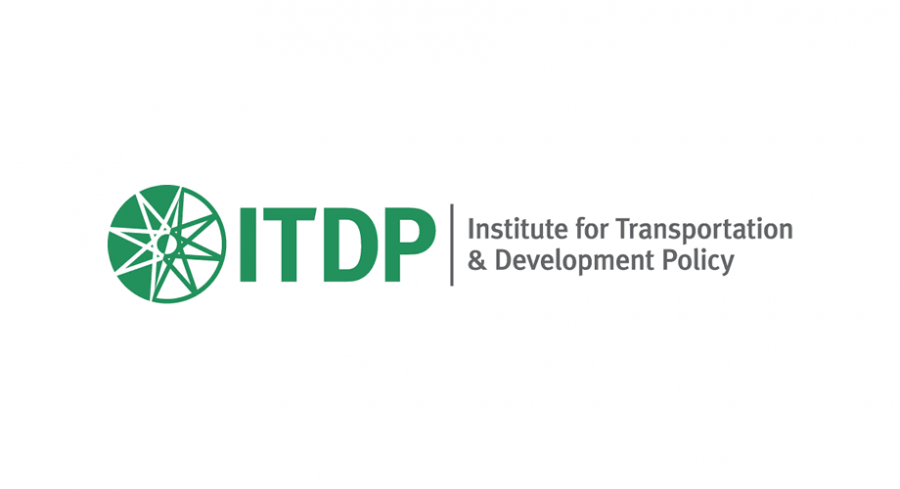
First-of-its-Kind Atlas Visualizes Sustainable Transport Indicators for Over a Thousand Metropolitan Areas
The Atlas displays key indicators of sustainable urban passenger transport—many of which have never before been measured globally—for 1,000 metropolitan areas.
WASHINGTON DC, NY, UNITED STATES, May 15, 2024 /EINPresswire.com/ -- The Institute for Transportation and Development Policy (ITDP) today published the Atlas of Sustainable City Transport, an online dashboard that includes measurements of nine key sustainable mobility indicators for over 1,000 metropolitan areas and over 40,000 legal jurisdictions and districts. These indicators measure what infrastructure means for people. They will prove especially useful in assessing access to sustainable mobility in low- and middle-income countries.
The Atlas permits an unprecedented level of insight into sustainable transport around the globe. Starting from a global map, users are able to zoom in on cities and measure all nine indicators for local administrative areas, such as wards or neighborhoods. The indicators include People Safe From Highways; People Near Protected Bikeways; People Near Car-Free Places; People Near Frequent Transport; People Near Rapid Transport, and more. Policymakers at all levels of government may track their city’s (or their country’s) progress up-to-date, easy-to-understand Atlas indicators.
For example, the cities of Seattle, USA, and Primpri-Chinchwad, India, have adopted the use of People Near Frequent Transport as an official progress metric. In the years since Seattle adopted this indicator, it has become the only major city in the U.S. to see an increase in bus ridership. Similarly, in Fortaleza, Brazil, the city has adopted People Near Bikeways as a way of tracking progress, and has become one of Brazil's leading cycling-friendly cities. By displaying these and other indicators globally, the Atlas will make it possible for cities around the world to replicate this success.
Advocates and concerned citizens will also find the Atlas’ data useful. Because the Atlas measures indicators at an unprecedented level of detail (not just the municipality, but within districts, wards, and often even neighborhoods), anyone with a computer and internet can find out which areas of their city are being served by sustainable transport infrastructure—and which are being ignored. The Atlas also permits inter-city comparisons. Walkability advocates, for example, would be interested to see that Latin American cities—such as Bogotá, Colombia or Lima, Peru—rank highly on indicators like Weighted Population Density and People Near Services, which measure the fundamentals of people’s ability to walk. Or, they might be interested in how African cities like Kigali, Rwanda excel in measures like People Safe From Highways, presenting models for infrastructure that other global cities can learn from.
ITDP has drawn on decades of regional and global experience promoting sustainable urban transport to produce this dashboard and its indicators are built on a decade of work designing measurements to inform policy. All of the data in the Atlas relies on four key sources of open and collaborative sources—the European Commission’s Global Human Settlement Layer; OpenStreetMap; MobilityData’s Mobility Database; and the Transit Explorer.
A great advantage of most open data sources is that anyone can contribute to them, provide suggestions, and correct inaccuracies. As the Atlas is built on open data, in turn, its data is published openly: all measurements are available for download. ITDP plans to update the Atlas annually. The Atlas was inspired by existing platforms like ITDP Brazil’s MobiliDADOS (2017). For assessing mobility projects within the Brazil region, MobiliDADOS is more context-sensitive. The Atlas permits comparisons between Brazilian cities and other cities worldwide.
“The Atlas of Sustainable City Transport is an empowering tool for all types of people in the transport and urban planning fields, from researchers to government officials,” said Heather Thompson, CEO of ITDP. “With the open data in the Atlas, ITDP is committed to helping cities and everyone in the mobility sector make more informed decisions to improve urban life.”
“We’re very excited to use the Atlas for many types of analyses in the City of Seattle,” said Ben Rosenblatt, Principal Planner at the Seattle Department of Transportation. “As we launch new programs guided by our 20-year Seattle Transportation Plan, we must do so equitably and intentionally. ITDP's open-source data on proximity to car-free spaces could inform our forthcoming People Streets and Public Spaces programming, for example. Supported by Seattle’s own race and social equity indicators, the Atlas will help us focus investment in the right places and more effectively advance a vision for equitable, safe, and sustainable mobility.”
Visit Atlas.ITDP.org or email data@itdp.org for more information.
###
The Institute for Transportation and Development Policy (ITDP) is a global nonprofit that works with cities worldwide to design and implement high-quality transport systems and policy solutions that make cities more livable, equitable, and sustainable.
Veronica Ortiz
ITDP
+1 212-629-8001
veronica.ortiz@itdp.org
Visit us on social media:
Facebook
Twitter
LinkedIn
Instagram
YouTube
Other
EIN Presswire does not exercise editorial control over third-party content provided, uploaded, published, or distributed by users of EIN Presswire. We are a distributor, not a publisher, of 3rd party content. Such content may contain the views, opinions, statements, offers, and other material of the respective users, suppliers, participants, or authors.




